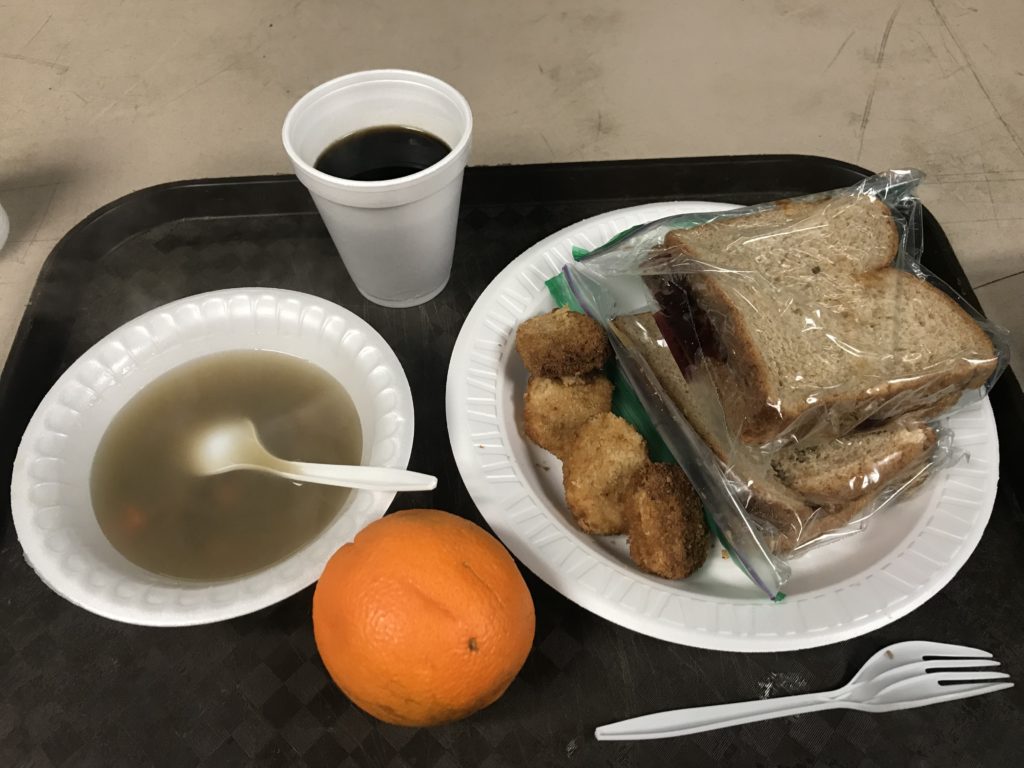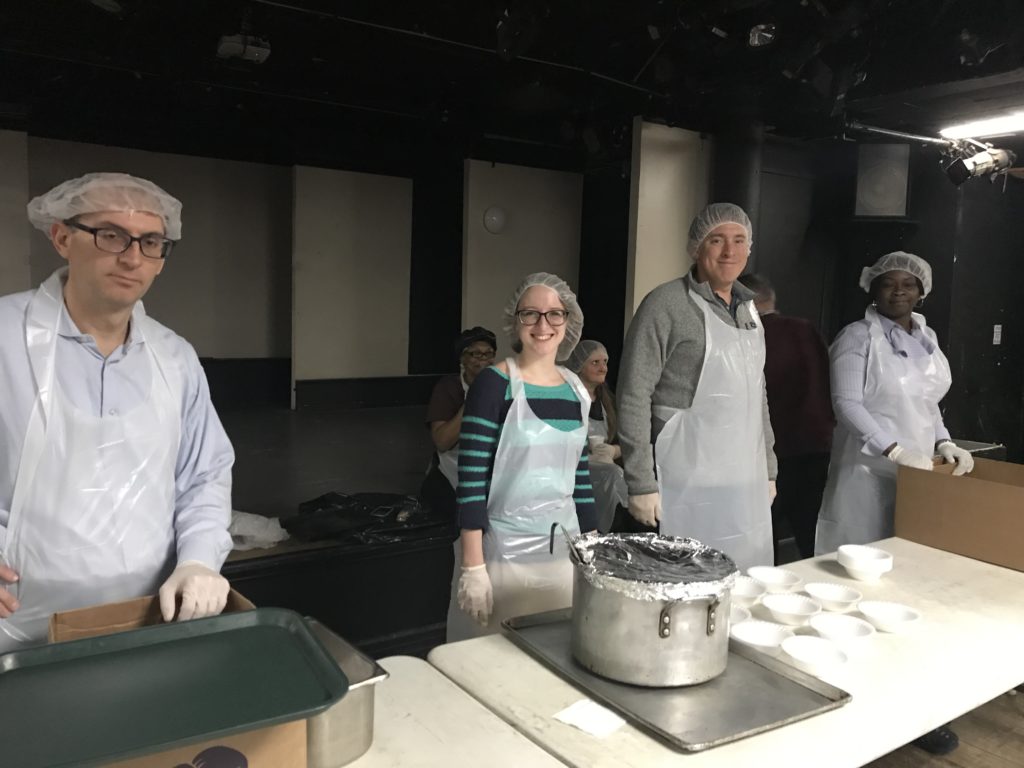On a cold rainy Thursday afternoon in Hell’s Kitchen’s Restaurant Row, the dining room is packed with hungry customers. Soft chatter echos across the spacious room. A stray sentence or two occasionally floats above the murmur. “The broth is really good!” or “Want me to take your plate?”
But this is no ordinary dining room; this is the soup kitchen at St. Luke’s Lutheran Church, which operates from 1 to 2 p.m. every Tuesday and Thursday. On today’s menu: peanut butter and jelly sandwiches, a vegetable soup, chicken nuggets, an orange, and coffee with milk and sugar. A hundred or so diners of all ethnicities, mostly men, mostly bearded, huddled around plastic tables over their trays of food, glad to be away from the cold. A steady stream of people waits patiently in line for food. Some diners leave as soon as they are done eating, but most hang out for an extra ten or fifteen minutes, enjoying a brief respite from the day.
The irony of a soup kitchen on Restaurant Row is not lost on Bob Wechtenhiser, 64, who serves as the parish administrator and greeter for the soup kitchen. “So when I see a regular, I’ll say something like ‘Frank, you go right in, your table’s waiting.’” Wechtenhiser said, chuckling. “We sing to people on their birthday.”
The soup kitchen is run out of a repurposed theater space next to St. Luke’s. The church is led by Interim Pastor Reverend Arden Strasser, 55, who greets visitors around the dining room and eats with some of his guests. The majority tend to stay for only a few months and move on, he said, and regular visitors are rare: “Not everyone is poor their whole life,” he said. “Sometimes they go through a rough year. Some times they are in transition. When you are poor, you typically make a plan to get your life together.”
Despite New York City’s status as the second richest city in the world, as measured by the number of residents worth $30 million or more, over 1.2 million residents, or 14.4%, are food insecure. They include not only those who are homeless or jobless, but also the working poor. “We get people with abuse issues, mental illness issues. But sometimes we get the tour bus ticket sellers out in Times Square. They come in for a meal, too.” Strasser said.
The soup kitchen costs $58,000 to $60,000 per year to operate, with funding from fundraising efforts, a few grants, and donations from the church congregation. The money goes to pay for a part-time cook, three part-time assistants, utilities, and the purchase of food to supplement food donations. The rest of the labor comes from volunteers: local companies who sign up for a day of giving, church members on their day off, and most recently, a family of tourists from Oklahoma who sought an alternative way to spend a day in New York City. On one recent day, the team of volunteers came from the nearby law firm Vedder Price.
The operation takes coordination and energy to manage. “It takes five to seven people to man the line,” Wechtenhiser said. “If we are understaffed, I’ll jump in from the front desk, and we all juggle to make it work.” And if the funding runs out, “We’d dip into the church funding.” This is the only soup kitchen serving the Hell’s Kitchen area and the only place where many people can receive a free hot meal. “We are a soup kitchen, not a food pantry. There is a big difference. Food pantries give you food, but you need the resources to cook. We serve a prepared hot meal.” Wechtenhiser said.
Strasser’s male guests tell him that women and children get more social support and access to housing that enables them to cook. The staff at St. Luke’s refers lunchtime visitors to the “Midtown Street Sheet,” from the Neighborhood Coalition for Shelter, if they need a guide on food, clothing, shelter, and health resources.
One of the more boisterous tables in the dining room is led by Maricelli Arias, 55, who is here with her son, Juan, and friend Erica Rodriguez, 31. Maricelli and Juan live in the neighborhood and cameto the soup kitchen because of need. They found a sense of community as well. “We are here every Tuesday and Thursday, Sunday service, too.” Arias said proudly as she gestured around the table. “We are all friends here.” Juan was recently baptized at St. Luke’s, with Wechtenhiser as his sponsor. Volunteer Richard Sterne, 77, drops by to greet the group. “These are all just regular folks,” Sterne said, “not all the food programs are like St. Luke’s. People feel more at home here.”
Strasser wants to expand the scope of services the soup kitchen is able to offer to include a registered nurse who can help take care of visitors’ basic health needs and a job board to help people get back on their feet. Wechtenhiser’s wishes are more directly tied to soup kitchen operations: “We could use a new freezer. We could use a new stove. These things are expensive. I wish that we could receive more outside funding grants.”
As with any restaurant, there are occasional unsatisfied customers. One guest thought the food bland, and brought out a plastic bag of chili peppers to eat with his meal. Another got creative and soaked the chicken nuggets in his soup. “Today not so good. Peanut butter and jelly and a soup, no good.” one guest grumbled on his way out. Wechtenhiser shrugs off the complaint good-naturedly: “You know what? Give us a try next week. See what we have then.”
Tags: Manhattan, Soup Kitchen


Your Comments